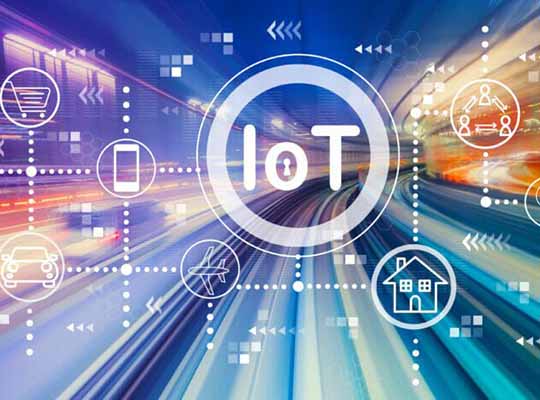One of the primary technologies fueling a technological shift is the Internet of Things. By 2025, the total number of connected IoT devices installed is expected to reach 30.9 billion. IoT is enhancing efficiency, assisting enhanced customer experience, and delivering deeper insights into better product strategy across various industries such as healthcare, retail, manufacturing, agriculture, and more.
During a global epidemic, the years 2020 and 2021 were defined by increasing technological adoption to provide greater efficiency and future-proofing. 5G adoption, healthcare innovation, smart homes, smart workplaces, automation, data analytics, and edge computing are the top themes we can expect in 2022. [x]cube LABS, a premier digital transformation company based in Hyderabad, has published an extensive report on the state of the Internet of Things in 2022 that gives us all the insights into how IoT is benefitting various industries and all that we can expect in the future.
To download the complete report for free, please visit this link: https://www.xcubelabs.com/research/iot-report-2022/
IoT for Business Transformation
The Internet of Things (IoT) is a network of interconnected computing devices, mechanical and digital equipment that are given unique identifiers (UIDs) and the capacity to communicate data without requiring human-to-human or human-to-computer interaction. IoT simplifies processes including logistics, manual tracking, and monitoring, a collaboration between 3rd parties, training and hiring, losing ground to competitors, and losing consumers.
IoT can help with this by developing smarter warehouses, tightening supply processes, making logistics frictionless, and remotely tracking and updating products/resources, eliminating the need for manual involvement.
According to [x]cube LABS, 13.8 billion IoT devices were deployed in 2021, and by 2025, the world will have 30.8 billion linked IoT devices. In addition, by reducing operational processes, IoT minimizes reliance on third parties. With a higher degree of automation, you can save a lot of money on training and hiring. It also aids in reaching out to clients with input for feature enhancements before they can reach out to you.
When a leading producer of filtration products approached [x]cube LABS to strategize IoT to take their merchandise to the next level, a detailed dive into the company’s operations helped in uncovering the primary difficulties and overhead expenses. Filter enhancements not only introduced new features but also increased process efficiency and customer satisfaction. The company was able to design goods that appealed to fresh, larger sectors, resulting in increased profit and retention, thanks to a solution that reduced a lot of manual maintenance tasks.
IoT Solution Development
The first step toward a solution is to identify the problem statement, which is followed by a detailed examination of the situation(s). Following the assessment, the solution is chosen based on market fit and predicted ROI reports. For the creation of a product, an agile model with the DevOps technique, accompanied by beta testing and delivery, is required. The solution must continue to scale and gain traction.
The overall number of Internet users is expected to increase by 6% annually, from 3.9 billion in 2018 to 5.3 billion in 2023. By 2023, each member of the world population will have 1.8 M2M connections, followed by linked home applications such as home automation, security and video surveillance, connected items, and tracking applications will account for nearly half of all M2M connections, or 48 percent. Wi-Fi connection speeds from dual-mode portable devices will triple globally by 2023 and the average Wi-Fi network connection speed will exceed 91.6 Mbps, up from 30.8 Mbps in 2018. The Asia Pacific will have the fastest Wi-Fi speeds, at 116.1 Mbps.
[x]cube LABS, leveraging IoT, has assisted enterprises in launching experimental solutions quickly so they can be tested and validated. They assist businesses in determining a product’s market fit through extensive analysis and ROI clarity. They are the best innovation partner because of their speedy and strong product builds, as well as post-release support and lower overhead costs.
A Brief History of IoT
The first known Internet of Things device is from the 1980s! It was a Coca-Cola refrigerator that could be controlled remotely via the Internet. The Chinese government designated the Internet of Things as a strategic priority in its five-year plan in 2010.
Nest Labs was bought by Google.
Nest Labs was a company that created smart home products. When Google bought the company for $3.2 billion in January 2014, it had grown to 280 people in just four years. Google later combined it with its home devices team, using the company’s experience with linked items and assisting IoT adoption.
Healthcare and IoT
According to projections, the Internet of Things can save the healthcare industry up to 330 billion dollars. As healthcare expenses and insurance premiums climb, the Internet of Medical Things, which allows for remote monitoring via smart implants and wearables, lowering the frequency of hospitalizations and clinic visits, is expected to help save money.
The global healthcare wearable market was worth $16.2 billion in 2021, and it is expected to increase at a CAGR of 13.2% to $30.1 billion by 2026. Aside from wearables, there are novelties like smart pills. By 2022, the global Internet of Things (IoT) medical industry will reach $158 billion. By 2025, the healthcare IoT industry will grow to $188.2 billion. In 2021, IoT patient monitoring will be the largest segment of the market. Telemedicine is one of the fastest-growing divisions of the healthcare industry today, with a market value of US$22 billion expected by 2023.
Manufacturing and IoT
IoT is driving advances in operations, manufacturing, and supply chain in the construction and operation of production systems, resulting in higher efficiency and revenue. IoT in manufacturing will expand at a 14.5 percent CAGR from 2022 to 2032, reaching $399 billion by the end of 2026.
The Internet of Things in Agriculture
According to the United Nations, the world’s population will reach 9.7 billion by 2050, resulting in a 69 percent increase in global agricultural production between 2010 and 2050. By 2024, the number of linked agricultural equipment may increase from 13 million, as noted at the end of 2014.
Precision farming dominates the IoT in the agriculture industry in terms of application and use, generating $8.60 billion in revenue in 2021. IoT in agriculture may expand at a CAGR of 10.1 percent, reaching $35.55 billion by 2026. Between 2018 and 2025, Asia-Pacific will increase at a CAGR of 16.4%. Africa is making tremendous progress as well, with yearly growth of 15% and a market worth $7 billion.
Retail IoT is a burgeoning market.
In 2021, the retail IoT market was valued at $17.270 billion. During the period 2022-2027, it is predicted to increase at a CAGR of 17%, reaching $52.720 billion by 2028. IoT technologies help improve the customer experience for 77% of retailers. It enables retailers to acquire increased insights into client preferences, according to 89 percent of early adopters.
NFC is also gaining popularity because it blends contactless smart card technology with smartphone convenience. According to McKinsey, automated checkout can reduce cashier staffing by up to 75%, resulting in annual savings of $150 billion to $380 billion by 2025.
Security and IoT
The global market for IoT security will grow at a CAGR of 22.1 percent from $14.9 billion in 2021 to $40.3 billion in 2026. The smart office market, worth $31.37 billion in 2020, is predicted to rise at a CAGR of 11.1 percent to $90.63 billion by 2030.
IoT and Education
The market for IoT in education may reach $26.80 billion by 2028, with a CAGR of 20.06 percent between 2021 and 2028. The Internet of Things helps to improve the security and safety of educational institutions. It aids in the tracking of essential resources and improves educational access.
The fact that only 0.06 percent of all devices are connected to the internet, best predicts the IoT technology’s eventual expansion. The world shall be able to see a massive surge of internet-connected devices in the next few years. According to Statista, there were over 237 million connected cars in operation in 2021, with over 400 million connected cars predicted by 2025 if current trends continue. This demonstrates that as more things in the environment get connected, lives become more convenient.
About [x]cube LABS
[x]cube LABS helps enterprises globally with digital transformation and digital technology adoption. They take a highly collaborative approach and help solve problems across the entire digital transformation journey from ideation and strategizing to experimentation and execution. They have deep expertise in emerging technologies such as IoT, AI, AR/VR, AI, ML, Game Tech, Data Science, and more, and a digital native mindset that allows them to understand the end-user perspective and devise unique solutions.
A defining feature of [x]cube LABS is that they don’t just build software or add features, but build digital products from the ground up to transform companies and their operations from within. They have delivered over 850 successful digital solutions for global enterprises.
For more information, visit: https://www.xcubelabs.com/















